Latvia is a lovely country sandwiched between Estonia and Lithuania on the Baltic Sea. Soon after the fall of the Soviet Union, Latvia gained it’s independence and in 2004 it joined the EU and NATO. Subsequently, Latvia has been flourishing ever since!
So, let’s talk about the interesting history of Latvia. This area was first settled in 9000 BC, leaving behind a lot of art and history. As a matter of fact, Latvia has about 140 castles and a bunch of stunning medieval towns that you need to know about!
In addition, Latvia has some of the most pristine parks, rivers and woods. We will share these gems with you, so do read on and find out how we spent 2 weeks exploring the amazing nature, castles and medieval towns of Latvia. However, we are slow travelling so the “perfect” itinerary to see everything that Latvia has to offer is 6-9 days depending on your pace.
Riga is a Must on any Latvia Itinerary

Riga is a UNESCO World Heritage site and there are many reasons for this! The city is known for its wooden buildings, Art Nouveau architecture and the cobblestone medieval Old Town.
We spent 8 days walking around Riga and enjoying the Old Town as well as some of the other neighborhoods. My Dad had lived a number of years here, so we had quite a bit to see to re-live his time here during WWII. However, for most folks 2-3 full days in Riga should be enough to see the top sights.
Free Walking Tours
In our opinion, one of the best ways to get to know any city is to go on a Free Walking Tour. And, Riga has 3 different free walking tours that we loved. The first is the Old Town one. The second is the Alternative tour which takes you outside of the Old town and into the Jewish Ghetto, the Central Market and the Moscow District. The third free tour is the Art Nouveau one. Each tour gave us additional information and we really valued them. And of course free walking tours are never truly free as we always tip the guide at the end.
Old Town Riga
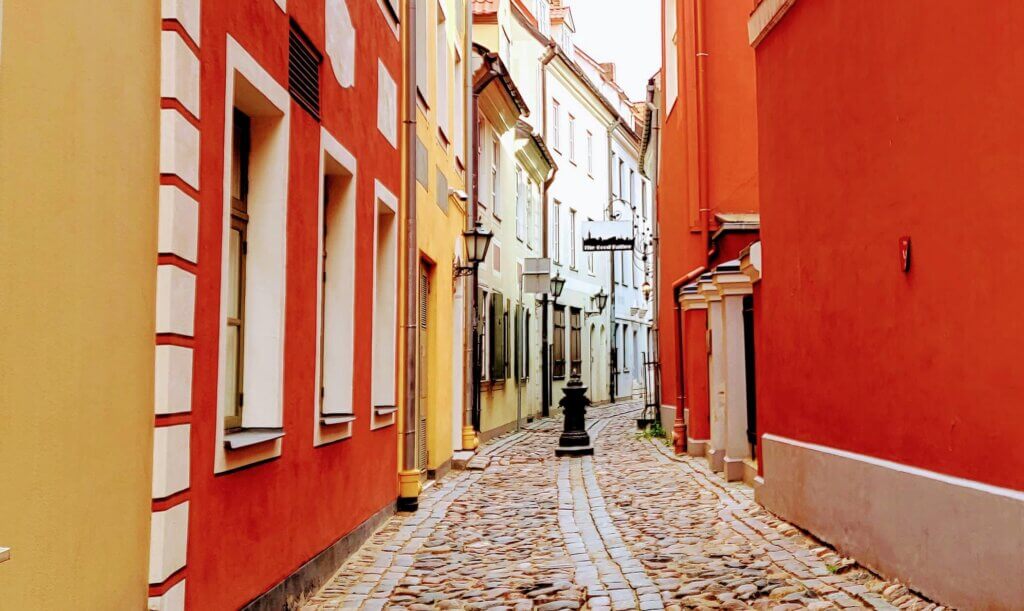
Old Town Riga is a labyrinth of cobblestone streets with some of them being so narrow that you can literally touch both sides of the opposing walls as you walk.
Our first stop after the free walking tour was the St. Peter’s Cathedral. The view from it’s spire shows off the whole town! After we went to admire the 13th Century town hall square. Ultimately we got lost in this gem of of an old town visiting it’s galleries, museums and shops.
No day in Riga’s Old Town is complete without a stop at one of it’s many cafes. Our favorite was MiiT which also has good vegan and vegetarian dishes as well.
Central Market
Riga’s Central Market was built in the 1920s and has recently been added to the UNESCO World Heritage list. It is still a working market where there is a lot to see and taste – even for a vegan.
My grandfather worked in this market during WWII, so for me it was fascinating to walk through it’s many lanes and try to imagine what it was like for him to be working there during that time.
Bastejkalna Park
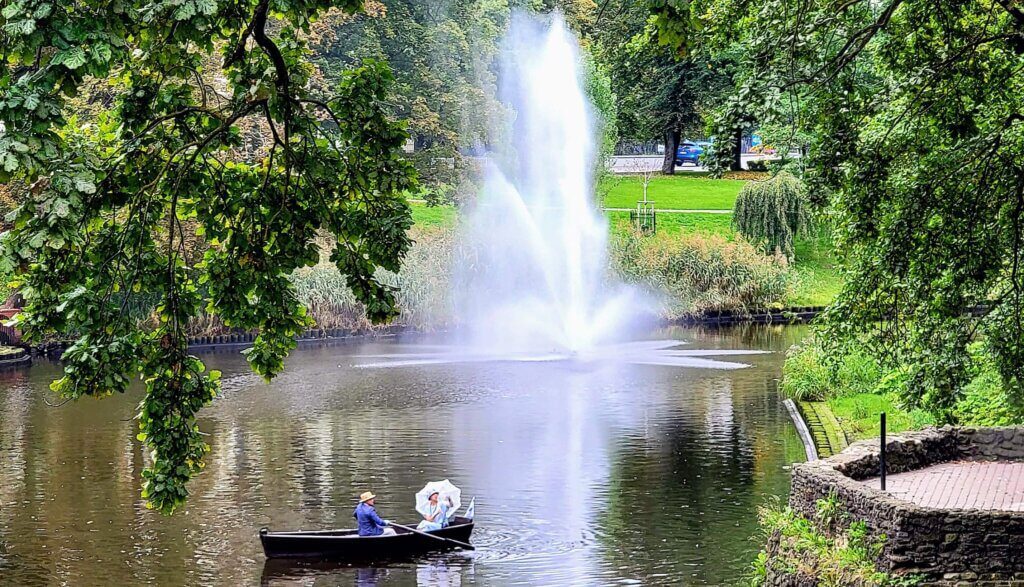
Named after Bastion Hill, this park is right beside Old Town and is gorgeous. There is a canal going across this park with many little bridges, flower beds and benches to enjoy the surroundings.
We watched a couple dressed up in costumes boating on the canal. It was quite a special sight.
Pro Tip: Our absolute favorite vegan restaurant in Riga was Maza Terapija. We went here at least once a day during our stay.
Art Nouveau
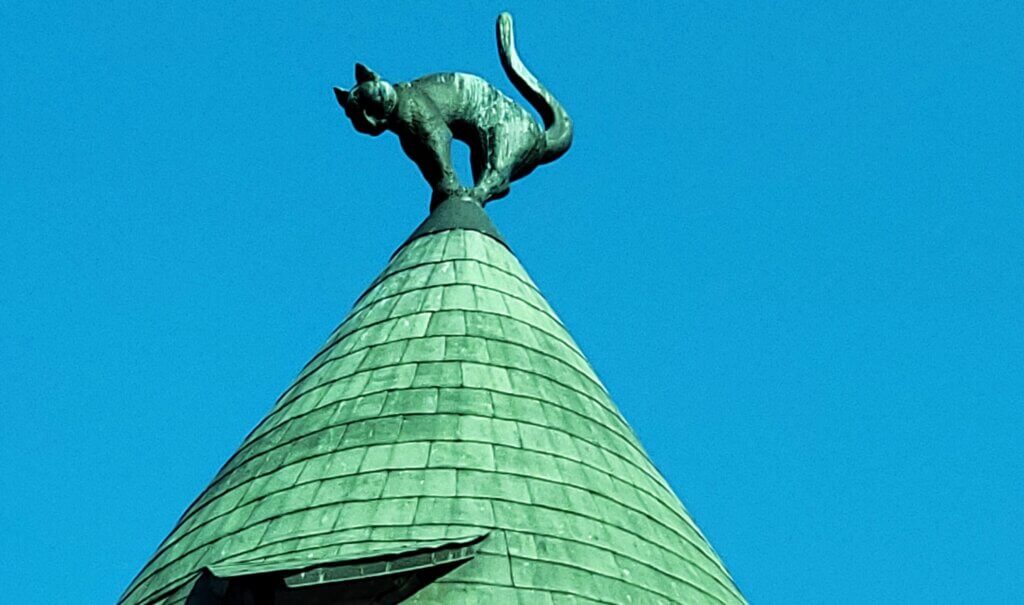
Riga experienced its golden age in the early 20th century just as Art Nouveau architecture was coming into fashion. So the city has one of the world’s richest collections of this exuberant style.
There are over 800 amazing Art Nouveau structures throughout the city, but the greatest concentration is on Alberta iela, a street largely built in a flurry of creativity by a single architect, Mikhail Eisenstein.
One of the stops that we really enjoyed was the Kaku Nams House (Cat house). The building is styled as medieval architecture with some elements of Art Nouveau. It is known for the two cat sculptures, with arched backs and raised tails, on its roof.
According to legend, the owner of the house wanted the cats to be placed with their tails turned towards the house of the Great Guild, which is nearby, as he held a grudge against its members. The owner was later ordered to change the cat’s direction.
The free Art Nouveau walking tour (I mentioned before) is a great way to get to know this style of architecture. Here is a different one that is also highly recommended.
Jurmala
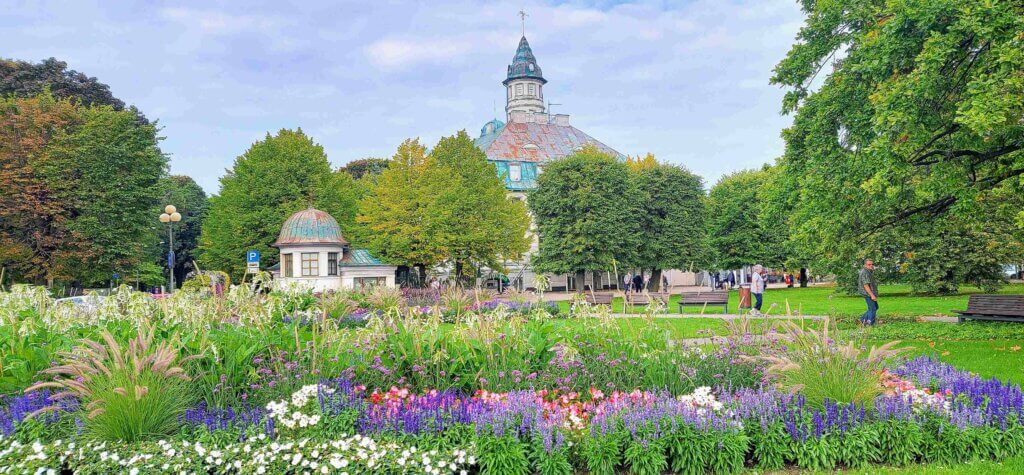
Jurmala is a seaside resort town. It is only 25 km west of Riga. To get here one can drive (35 minutes). However, we recommend taking the train as it only takes 35 minutes to get there as well.
This is a great town to sunbathe (in the summer). Majori beach is considered the nicest. However there is a 25 km stretch of white sandy beach here – so plenty to go around for everyone.
Dzintari Forest Park is a great place to go for a walk and explore. During the summer folks also go rollerblading here. And the trails turn into cross country skiing trails in the winter.
One of the main and oldest streets of Jurmala is called Jomas street. We really enjoyed walking it and browsing through the shops and cafes.
Jurmala is also a good place to spend the night at one of the well known hotels with hot springs. One of the best is the Kurshi Hotels and Spa.
Kuldiga
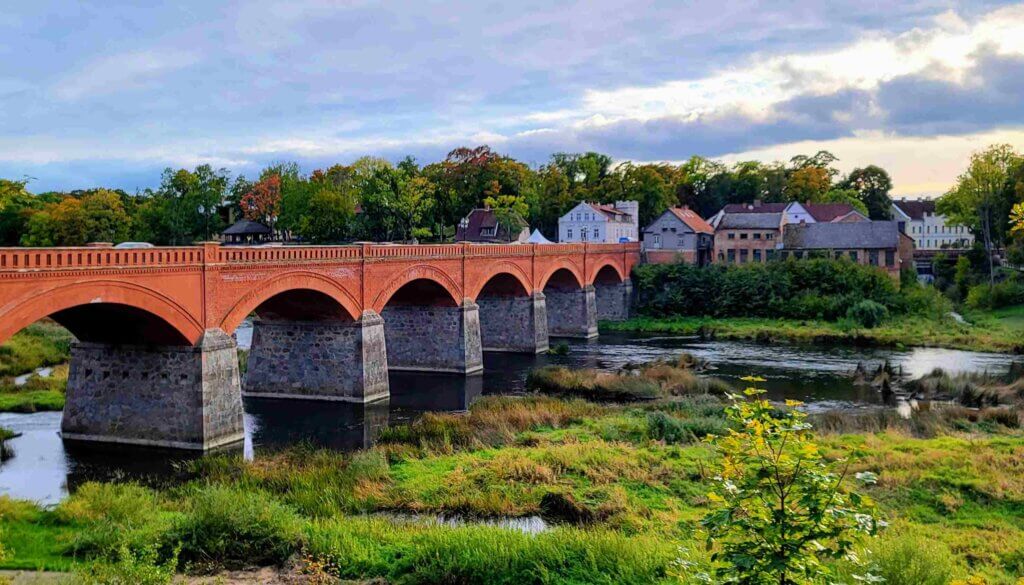
This picturesque town was established in 1242 and it has preserved it’s medieval appearance and charm. In addition, the town has one of the widest brick bridges in Europe. It was built in 1874 and is also the longest road bridge of this kind in Europe – it’s 164 metres long.
The Old Town of Kuldiga is worth a half day visit. However, this is a very big detour from a typical Latvia itinerary. Therefore, unless you want to drive through the country to experience the people and the culture, this is a place that can be missed.
Pilsrundale – Rundale Palace
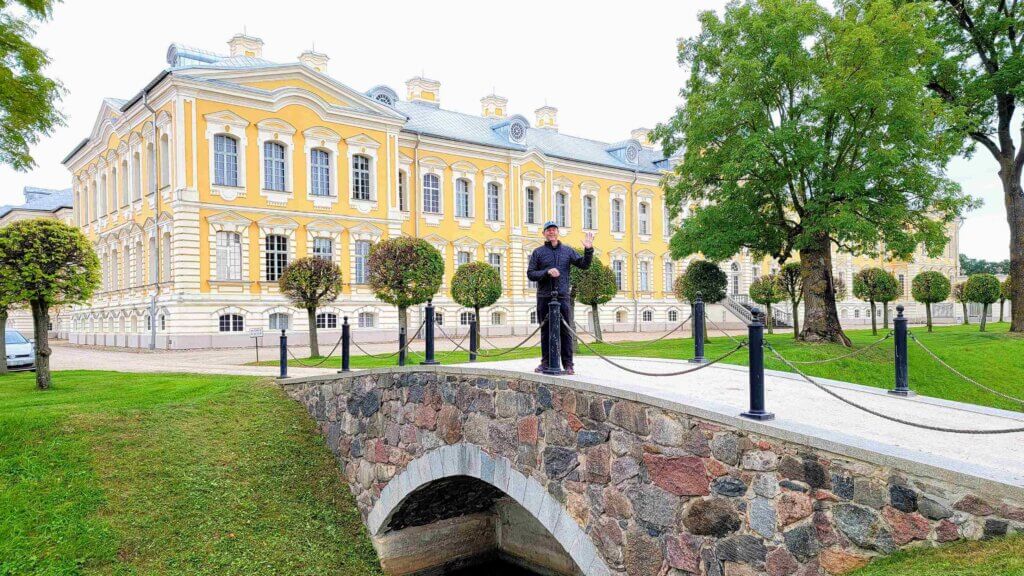
Rundale Palace is an 18th century grand residence which was built for the Duke of Courland. It was designed by Italian baroque architect Bartolomeo Rastrelli, who is best known for the Winter Palace in St Petersburg. 40 of the 138 palatial rooms are open to the public. The gardens are quite beautiful as well.
Tickets can be pre-purchased here.
We stayed at the Rundale Solstice Apartments. The apartment was amazing and really gave us some insight into rural life in Latvia.
Bauska – Bauska Castle
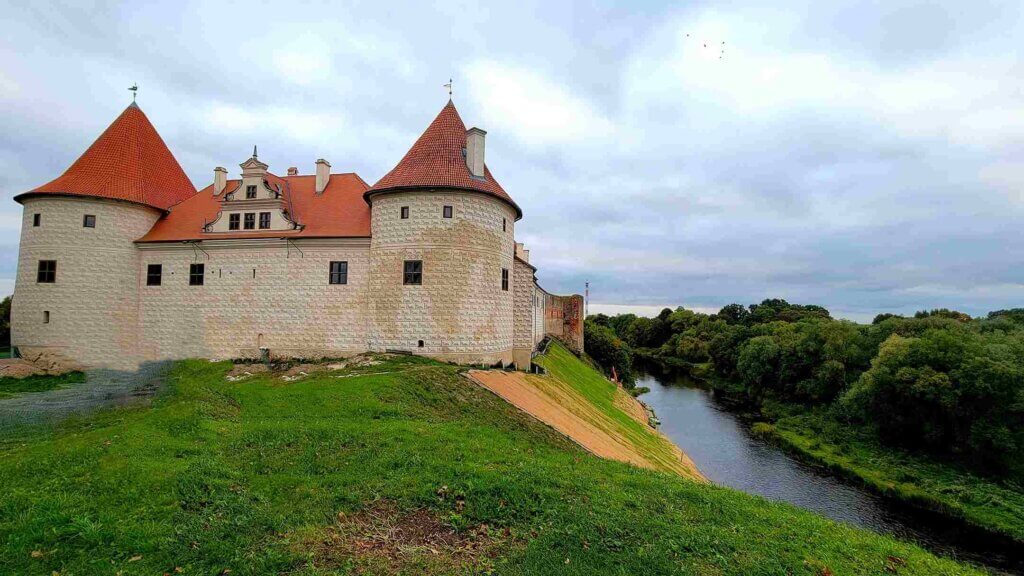
Just 12 km from Rundale Palace is Bauska and it’s castle.
Bauska is a charming small town to stroll and enjoy the wooden architecture. In addition, there is a pretty riverbank as well.
Ultimately the main attraction is the Bauska Castle which has 2 parts to it. The first is the medieval ruins of an earlier castle and the second is the renaissance elegance of a later palace. The castle was originally built for the Livonian Order in the 15th century and rebuilt for the local Duchy in the 16th century.
Bauska is worth spending a few hours in. Perhaps on the way to or from Rundale Palace.
Gauja National Park
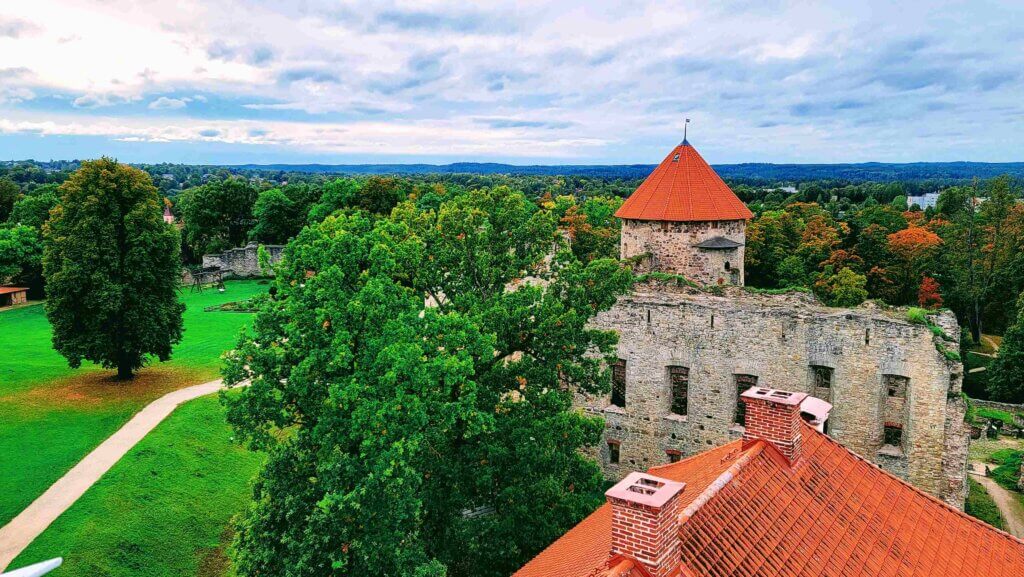
Gauja National Park is the largest and oldest of the national parks in Latvia. Furthermore it has great biological diversity, natural springs, cliffs, picturesque views and unique natural and historical monuments. In fact it’s colorful sandstones were formed 350-370 million years ago! In addition to all of this Gauja National Park is incredibly verdant and peaceful.
Within the Gauja National Park are some of the most impressive castles and medieval towns of Latvia. For example: Turaida, Sigulda and Cesis.
Turaida Castle
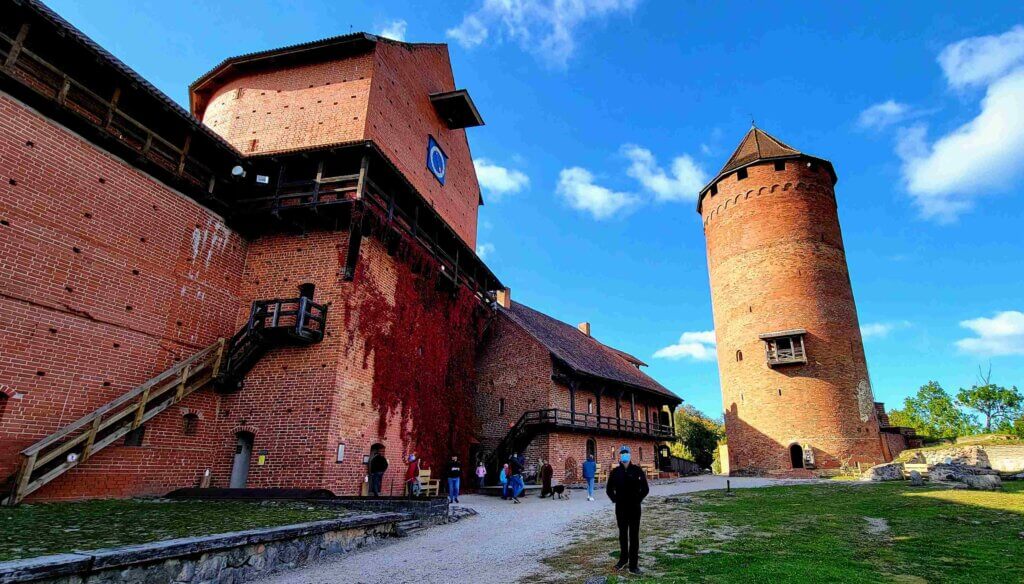
Turaida Castle’s tower peeks over the enormous Gauja National Park. It truly does look like something out of a fairy tale. It was initially built in 1214 and has been rebuilt throughout the years. In addition the property has some galleries and art exhibit and a sculpture garden.
Sigulda’s Castles
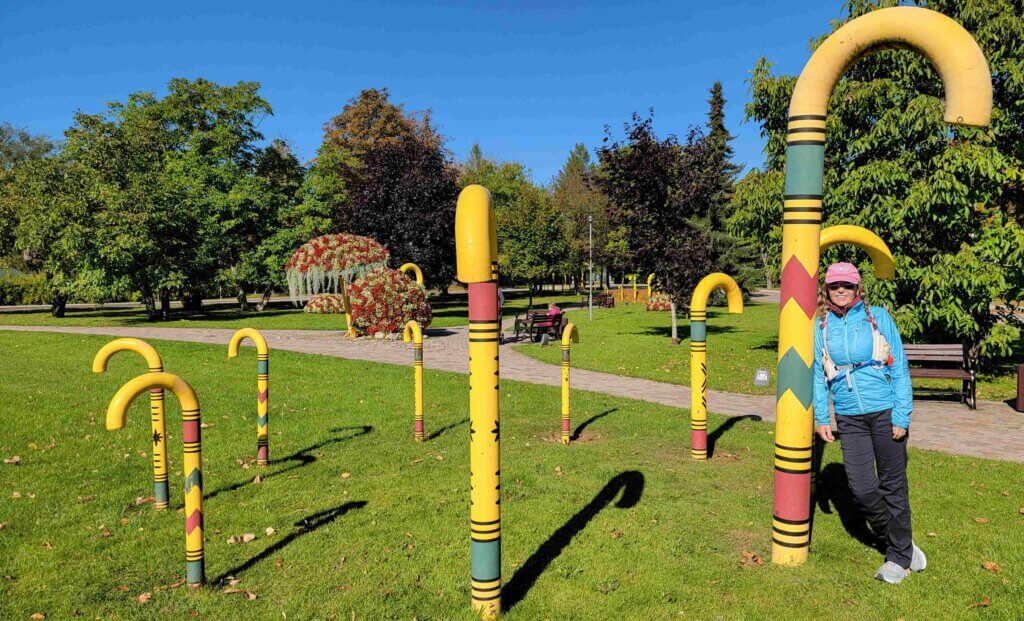
The castle ruins of Sigulda’s old castle date back to 1207 when it was built by the Livonian Order. However it was damaged through the centuries.
The last renovations of this ancient castle walls were in 2012. You can visit the castle ruins and see the walls and inner courtyard. There are some nice viewpoints over the Gauja River valley too.
Sigulda’s New Castle was built in a Neo gothic style and its new location has a good view of the old castle and the overall river valley.
Cesis

Cēsis is a town known for its medieval castle. It is about 95 km east of Riga. Originally it was built in the 13th century and has been rebuilt many times since. Cesis Castle has wall paintings, dungeons and towers with views.
In addition, the Castle Park includes an old brewery, a cemetery and the Transfiguration of Christ Orthodox Church. Also on castle grounds, the 18th-century Castle Manor House is home to the Cesis History and Art Museum.
Latvia Itinerary Options
The first option to see Latvia’s gems is to travel around the country. We decided to drive in a counter clockwise direction and were lucky to see quite a bit of the country. Therefore, this itinerary would be 6-9 days.
However, the other option is to stay in Riga and just do day trips to the most interesting spots. This would create very full days but would certainly shrink the time in Latvia. Should you choose this option, we would recommend the following:
- 2-3 days in Riga
- day trip to Jurmala
- day trip to Gauja National Park to see Turaida, Sigulda and Cesis.
- If you love palaces, then a day trip to Rundale Palace and Bauska
- We added Kuldiga. But as you can see it is an extra 212 km of driving. It is a charming town, but not worth a trip just to it. However, we quite enjoyed the added 3 hours of driving as we got to experience more of the people and the culture of Latvia.
In summary, the skinny version of this itinerary would be 4-6 days.
PRO TIP: Another option is to travel through Latvia on a train! The Train line is a good option for saving money on transportation in Europe.
Wrap Up – Latvia Itinerary
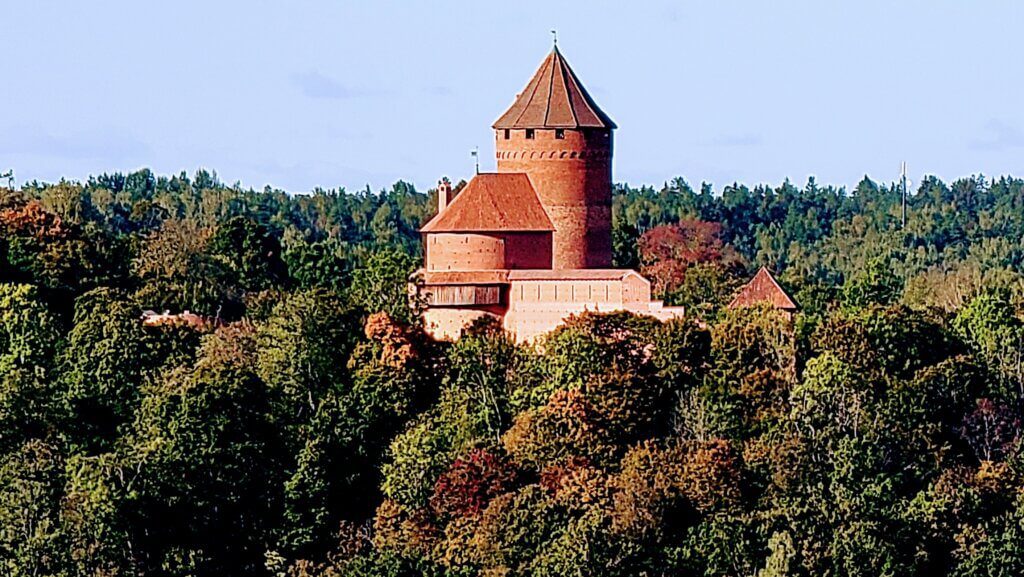
Latvia is such an interesting combination of history and nature. For us, driving around the country was very meaningful because we got a chance to experience the culture and the people of Latvia. And of course we got to see the wonderful jewels of this Baltic country.
As an aside, 24% of Latvians speak Russian. I wonder how they feel today about Russia overall with it’s horrible invasion of Ukraine?
Have you been to any of the Baltic countries? Are you planning on going? We would love to know.


2 Comments
Bonjour,
Merci pour c’est information.
Et cela ma permi de me projeter .
Thank you so much for reading Patrick and we are very glad that you found it helpful!
Je suis ravie que cela vous ait aidé ! Merci de votre lecture 🙂